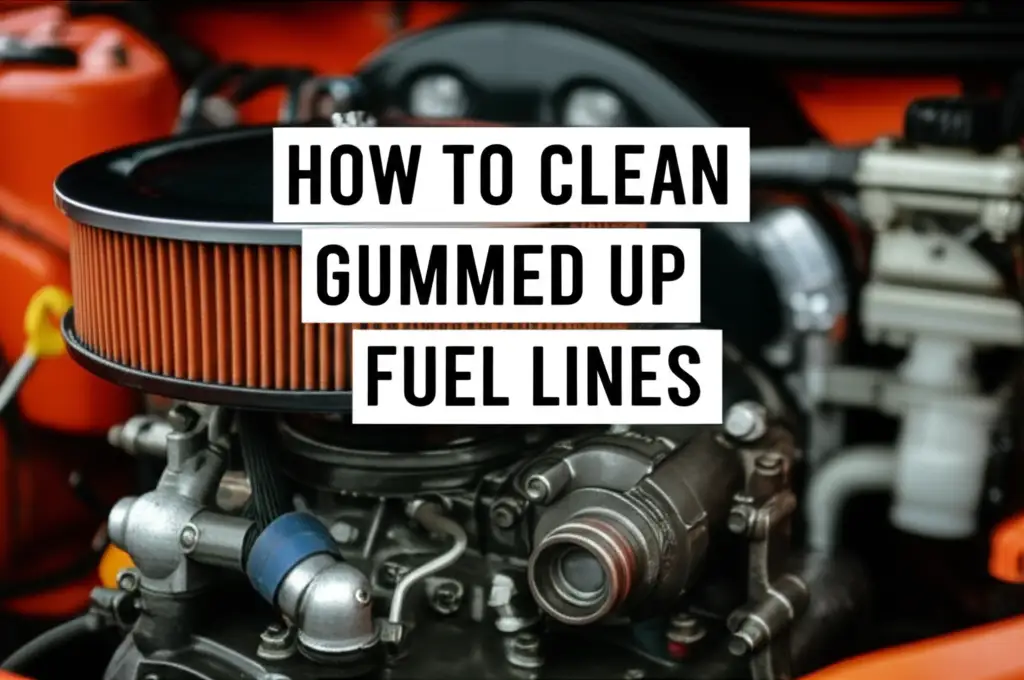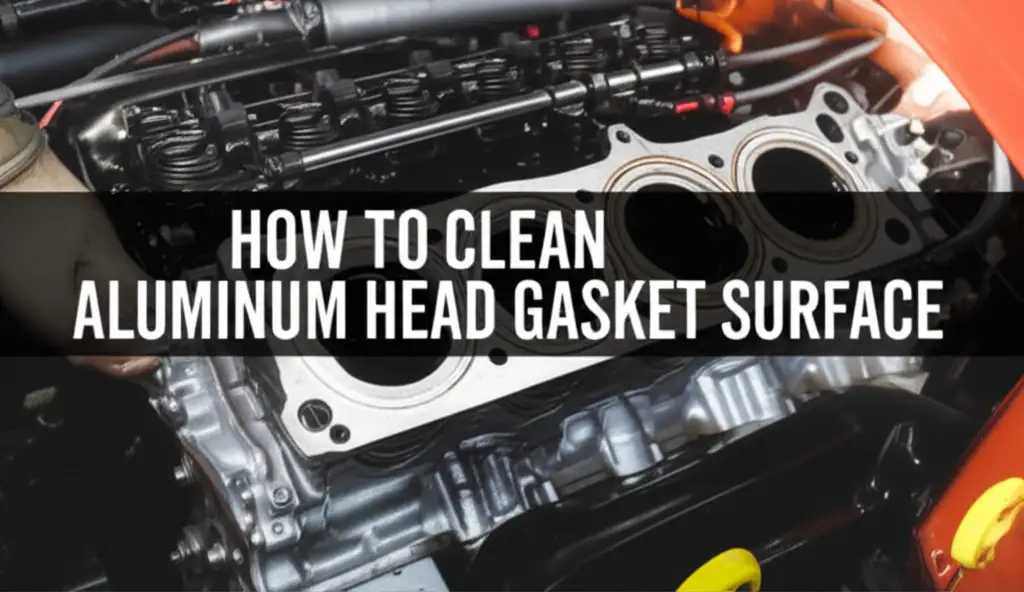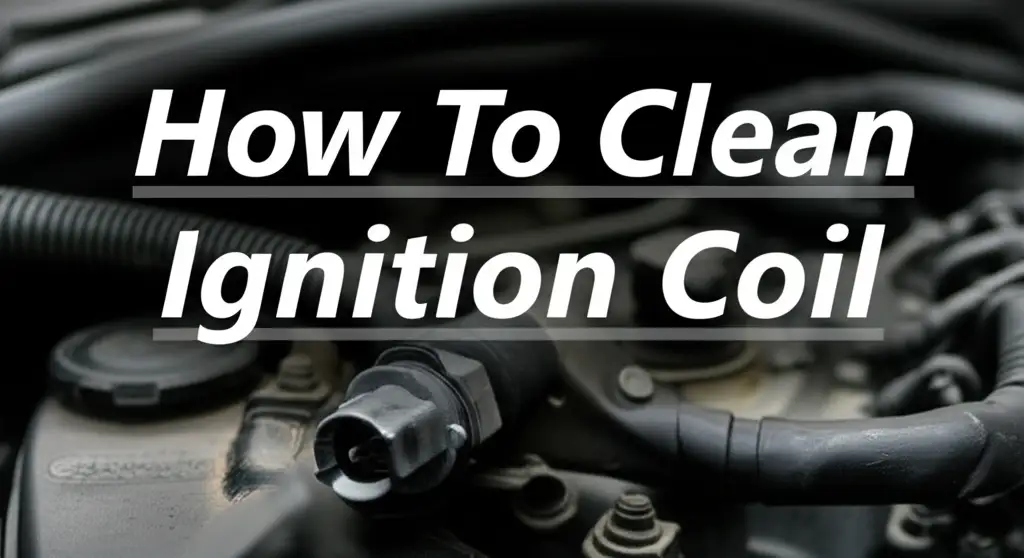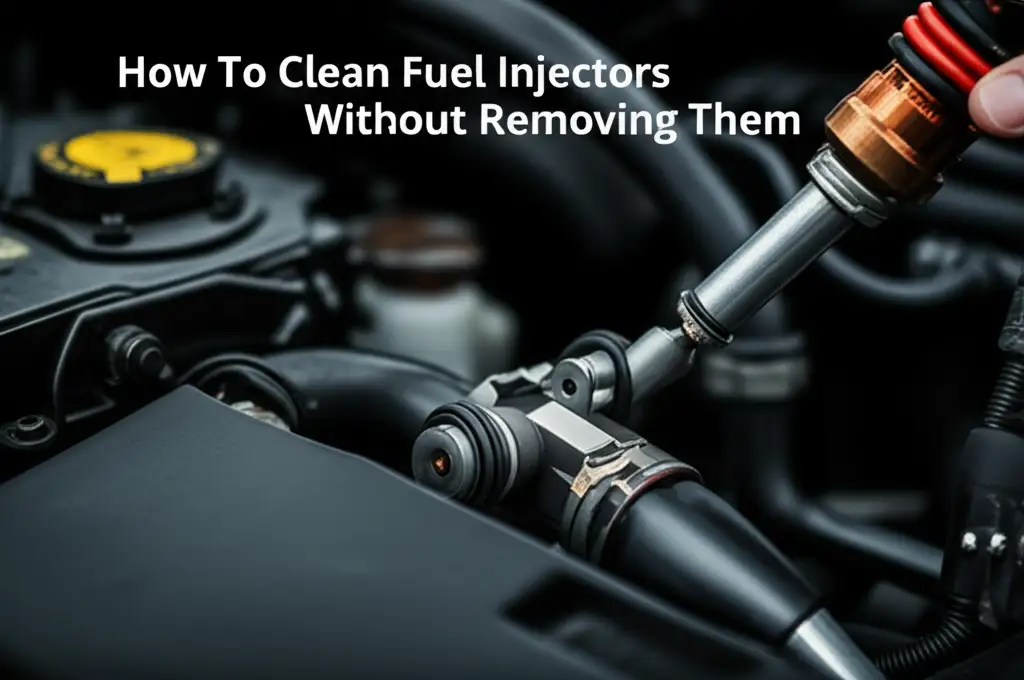· Automotive Maintenance · 16 min read
How To Clean Gummed Up Fuel Lines

Clean Gummed Up Fuel Lines: A Complete Guide
Has your vehicle lost its usual pep? Does it hesitate, stall, or struggle to start? If so, gummed up fuel lines might be the culprit. Over time, fuel deposits can build up, blocking the flow of gasoline and starving your engine. This issue leads to poor performance and can cause lasting damage.
Learning how to clean gummed up fuel lines is a valuable skill for any vehicle owner. It saves money on professional repairs and helps maintain your car’s health. This guide will walk you through the entire process. We cover everything from recognizing the problem to flushing out stubborn gunk. Get ready to restore your vehicle’s power and efficiency.
Takeaway
- Identify symptoms of gummed fuel lines like rough idling or poor acceleration.
- Gather necessary tools and prioritize safety before starting any work.
- Choose between simple fuel additives or manual flushing based on blockage severity.
- Properly prepare your vehicle and safely disconnect fuel lines.
- Flush lines using compressed air or a suitable solvent.
- Reassemble components carefully and check for leaks.
- Implement preventative measures to avoid future gum buildup.
Gummed up fuel lines hinder fuel flow, leading to poor engine performance. You can clean them by using a fuel system cleaner for minor issues. For stubborn clogs, disconnect and manually flush the lines with compressed air or a specialized solvent.
Understanding Gummed Up Fuel Lines: Causes and Symptoms
Fuel lines are crucial for delivering gasoline to your engine. When they get gummed up, it means deposits of varnish or sludge coat the inside of these lines. This buildup restricts fuel flow, starving the engine of the fuel it needs. Understanding why this happens and what to look for helps in early detection.
Several factors contribute to fuel line gumming. The most common cause is old or stale fuel. Gasoline contains volatile compounds that evaporate over time, leaving behind heavier residues. These residues harden into gummy deposits. Another major contributor is ethanol. Many modern fuels contain ethanol, which attracts moisture. Water in the fuel system promotes rust and also breaks down fuel, forming more gunk. Infrequent vehicle use also allows fuel to sit stagnant, accelerating the gumming process. Additives in low-quality fuels can also contribute to this problem over time.
Recognizing the symptoms of gummed up fuel lines saves you from bigger issues. Your vehicle might show several warning signs. A common symptom is a noticeable drop in engine performance. You might feel the car lacking power during acceleration or struggling to maintain speed. The engine may also run rough or idle unevenly. It might sputter or hesitate, especially under load.
Starting the car can also become difficult. You might need to crank the engine multiple times before it fires up. In some cases, the engine might stall unexpectedly while driving. This happens because the fuel supply is inconsistent. Reduced fuel efficiency is another telltale sign. Your vehicle will consume more fuel than usual to travel the same distance. Lastly, the check engine light might illuminate. This indicates a general problem, but when combined with other symptoms, it points to a fuel system issue. Paying attention to these signs helps you address the problem before it worsens.
Essential Tools and Safety Precautions for Fuel Line Cleaning
Cleaning fuel lines requires the right equipment and a strong focus on safety. Fuel is flammable, and working with it demands caution. Always prioritize your safety and the safety of your surroundings. Having the correct tools makes the job easier and safer.
First, gather all the necessary tools before you begin. You will need safety glasses to protect your eyes from splashes or debris. Heavy-duty gloves protect your hands from fuel and cleaning agents. A set of wrenches and pliers will help you disconnect and reconnect fuel lines. You will also need fuel line clamps or vise grips to stop fuel flow once lines are disconnected. A compressed air source, like an air compressor, is vital for blowing out blockages. For cleaning agents, pick a suitable fuel system cleaner or carburetor cleaner. You will also need shop rags or absorbent towels to catch any spilled fuel. A drain pan or bucket is essential for collecting old fuel.
Safety is not just a suggestion; it is a strict requirement. Always work in a well-ventilated area. This minimizes the risk of inhaling harmful fumes. Never work near open flames, sparks, or anything that could ignite fuel vapor. This includes hot surfaces or electrical equipment that might spark. Disconnect the vehicle’s battery before you start. This prevents accidental electrical shorts. Keep a fire extinguisher close by. A class B extinguisher is best for flammable liquid fires.
Proper disposal of fuel and cleaning agents is also crucial. Do not pour old fuel or chemical waste down drains or onto the ground. Collect all liquid waste in sealed containers. Take these containers to an authorized hazardous waste disposal facility. Read the labels on all cleaning products. Follow the manufacturer’s instructions for safe use and disposal. Taking these precautions ensures a safe and effective cleaning process.
Preparing Your Vehicle for Fuel Line Cleaning
Proper preparation is key to a successful and safe fuel line cleaning. Skipping steps can lead to hazards or complications. This phase ensures you work efficiently and prevent accidental fuel spills or damage. Take your time to set up everything correctly.
Start by parking your vehicle on a flat, level surface. This provides a stable working environment. Engage the parking brake to prevent any movement. Then, open the hood and locate your vehicle’s battery. Disconnect the negative battery cable first. Use a wrench to loosen the terminal clamp, then pull the cable away from the battery post. This step prevents accidental electrical shorts or sparks while you work with fuel.
Next, you must relieve the fuel system pressure. Fuel lines are under pressure, even when the engine is off. Releasing this pressure prevents fuel from spraying out when you disconnect lines. The method for relieving pressure varies by vehicle. Check your car’s service manual for the exact procedure. Often, it involves locating the fuel pump fuse or relay in the fuse box. Remove this fuse or relay. Then, try to start the engine. It will crank but not start, or it might run briefly and then die. This action consumes the remaining fuel pressure in the lines. Once the engine fails to start, crank it for another few seconds to ensure all pressure is gone.
Identifying the fuel lines is the next step. Your vehicle has a supply line and a return line. The supply line carries fuel from the tank to the engine. The return line sends unused fuel back to the tank. They are typically metal or nylon lines that run along the underside of the vehicle. Follow these lines from the fuel tank area up to the engine compartment. Pay attention to how they are routed and connected. Note any clips or fasteners holding them in place. Knowing which lines are which will be important when you start the cleaning process. Ensure you have clear access to the connections you need to loosen.
Method 1: Using a Fuel System Cleaner for Minor Gunk
For minor gum buildup or as a preventative measure, a high-quality fuel system cleaner is an excellent first approach. These products are designed to dissolve deposits within your entire fuel system. They offer a convenient way to clean without extensive disassembly. This method is often the easiest starting point for anyone experiencing early symptoms of fuel line gumming.
Fuel system cleaners work by using powerful detergents and solvents. When you add them to your fuel tank, they mix with the gasoline. As this treated fuel flows through the lines, it dissolves varnish, carbon, and other deposits. These cleaners do not just target fuel lines. They also clean the fuel pump, fuel filter, and fuel injectors. This comprehensive cleaning helps restore optimal fuel delivery and engine performance. Some formulations are specifically designed to combat the effects of ethanol. They neutralize moisture and prevent new gum from forming.
Using a fuel system cleaner is very straightforward. First, choose a reputable brand known for effective cleaning. Read the product instructions carefully. Most cleaners require you to add the entire bottle to a nearly full fuel tank. This ensures proper mixing and concentration. Drive your vehicle as usual after adding the cleaner. The cleaning process happens as you drive. It can take one or two full tanks of treated fuel to see results. Some stubborn cases may require a second application.
The benefits of this method include its simplicity and minimal effort. You do not need any special tools or mechanical skills. It is also an effective preventative measure when used regularly. However, fuel system cleaners have limitations. They might not clear heavy, solidified gum blockages. For severe cases, manual cleaning is often necessary. If symptoms persist after using a cleaner, it is time to consider more direct methods. Always remember, prevention through regular use of a quality cleaner can save you from bigger problems down the road.
Method 2: Manual Cleaning and Flushing for Stubborn Gum
When fuel system additives do not resolve the issue, or if you suspect a significant blockage, manual cleaning and flushing become necessary. This method involves physically disconnecting the fuel lines and cleaning them directly. It is more involved but highly effective for stubborn gum and varnish. This process provides a thorough cleaning that restores maximum fuel flow.
Start by ensuring your vehicle is properly prepared, as discussed earlier. This includes disconnecting the battery and relieving fuel system pressure. Now, identify the specific fuel line you need to clean. Often, gumming is worse in the supply line. Carefully disconnect the fuel line from both ends. You might need special fuel line disconnect tools for certain types of fittings. Have your drain pan ready to catch any residual fuel that might spill out. Use fuel line clamps just before the disconnection points to minimize leakage. Once disconnected, inspect the ends of the line for visible gunk.
The next step involves physically clearing the blockage. For lighter gum, you can use compressed air. Direct a steady stream of compressed air into one end of the disconnected fuel line. This forces any loose deposits out the other end. Be prepared for debris and fuel to exit the line. Point the line into your drain pan or a rag. Repeat this several times, from both directions if possible, until air flows freely. Listen for a clear, unobstructed airflow.
For tougher, solidified gum, compressed air alone may not be enough. In these cases, you will need a solvent. Carburetor cleaner, brake cleaner, or a specialized fuel system flush product can work. Pour a small amount of the solvent into one end of the fuel line. Allow it to soak for several minutes to dissolve the gum. You can gently shake or tap the line to help loosen deposits. Then, use compressed air to blow the solvent and loosened gunk out of the line. Repeat this process until the line is clean. You should see clear solvent exiting the line, free of debris. Always use caution with solvents. Work in a well-ventilated area and wear appropriate personal protective equipment. Thorough manual cleaning ensures your fuel lines are completely clear.
Post-Cleaning Steps and Reassembly
After you have successfully cleaned your fuel lines, the job is not over. Proper reassembly and testing are crucial to ensure everything works correctly and safely. Rushing this stage can lead to leaks, further damage, or even a fire hazard. Take your time to put everything back together securely.
Start by carefully reconnecting all the fuel lines you disconnected. Ensure each fitting is clean and securely tightened. Double-check all connections to prevent leaks. Overtightening can damage fittings, while undertightening can cause leaks. Use the correct wrenches and apply appropriate torque if specified by your vehicle’s manual. Reattach any clips or fasteners that held the lines in place. Ensure the lines are routed correctly and not pinched or rubbing against other components. Remember to replace the fuel pump fuse or relay that you removed earlier.
Once everything is reconnected, you need to prime the fuel system. This refills the lines with fuel and builds pressure before starting the engine. Turn the ignition key to the “ON” position (without starting the engine) for a few seconds. You might hear the fuel pump hum as it activates. Then, turn the key to “OFF.” Repeat this cycle two or three times. This action helps to push air out of the fuel lines and fill them with gasoline. Priming also allows you to check for immediate leaks.
After priming, perform a thorough leak check. Visually inspect all the fuel line connections you worked on. Look for any drips, wet spots, or the smell of gasoline. If you see or smell any fuel, immediately turn off the ignition. Re-tighten the affected connection. Do not start the engine if you detect a leak. Once you are certain there are no leaks, you can attempt to start the engine. It might take a few extra cranks to start as the system fully pressurizes and all air is expelled.
Once the engine starts, let it idle for several minutes. Continue to check for any fuel leaks during this time. Listen for any unusual noises or rough idling. If the engine runs smoothly and there are no leaks, you can proceed with a test drive. Drive the vehicle at varying speeds. Pay attention to acceleration, engine performance, and any hesitation. If the vehicle runs smoothly and shows improved performance, your cleaning was successful. If problems persist, a deeper diagnostic might be needed.
Preventative Measures: Keeping Your Fuel Lines Clear
Cleaning gummed up fuel lines is effective, but preventing the problem in the first place is even better. Implementing a few simple habits can save you time, money, and hassle. Regular maintenance and smart fuel choices keep your fuel system healthy. Proactive steps help ensure smooth fuel flow and optimal engine performance for years to come.
One of the best preventative measures is using a quality fuel stabilizer, especially for vehicles stored for long periods. If your car, motorcycle, or lawnmower sits for more than a month, fuel can begin to degrade. A fuel stabilizer prevents this degradation. It keeps the fuel fresh and stops varnish and gum from forming. Add the stabilizer to your fuel tank according to the product’s instructions. Run the engine for a few minutes to ensure the treated fuel circulates throughout the entire system. This protects the fuel lines, fuel pump, and fuel injectors from gum and corrosion.
Regular vehicle use also helps. Fuel that moves through the system frequently is less likely to become stale. Drive your vehicle often, even for short distances, to keep the fuel circulating. If you have multiple vehicles, rotate their use to prevent any single one from sitting too long. For vehicles that are not daily drivers, consider starting them and letting them run for 10-15 minutes every week or two. This action circulates fresh fuel and keeps components lubricated.
Choosing quality fuel is another important step. While all gasoline contains some level of impurities, higher-quality fuels often have better detergents and fewer contaminants. Stick to reputable gas stations that have high turnover rates. This ensures the fuel you buy is fresh and has not been sitting in their tanks for too long. Using a premium-grade fuel, if recommended by your vehicle manufacturer, can also provide additional cleaning additives.
Lastly, consider periodic use of a good fuel system cleaner as a maintenance habit. Even without visible symptoms, adding a bottle of cleaner every few thousand miles or before an oil change can help prevent buildup. These cleaners work to dissolve minor deposits before they become major clogs. This proactive approach supports overall engine health. By following these simple preventative measures, you can keep your fuel lines clear and your vehicle running smoothly.
FAQ Section
How long does it take for fuel lines to get gummed up?
The time frame varies. Fuel lines can start to gum up in as little as 30 days if a vehicle sits with untreated fuel. Ethanol-blended fuels can accelerate this process. Environmental factors like high temperatures also play a role. Regular use and proper fuel storage are important to prevent this issue.
Can gummed fuel lines cause engine damage?
Yes, gummed fuel lines can lead to engine damage. Restricted fuel flow forces the fuel pump to work harder, potentially causing it to fail. Insufficient fuel delivery can lean out the air-fuel mixture, leading to engine misfires or overheating. This can damage pistons, valves, and other internal engine components over time.
What is the best solvent to clean fuel lines?
For effective cleaning, carburetor cleaner or dedicated fuel system flush products work well. These solvents are formulated to dissolve varnish and gum deposits. Brake cleaner can also be used as an alternative, but ensure good ventilation. Always follow product instructions and safety warnings when using chemical solvents.
Can I clean fuel lines without removing them from the car?
For minor gumming, you can try cleaning fuel lines without removing them. Adding a high-quality, concentrated fuel system cleaner to your gas tank is the primary method. This method helps dissolve deposits as the fuel flows. However, for severe clogs, disconnecting and manually flushing the lines is usually necessary.
How often should fuel lines be cleaned?
Fuel lines do not require regular scheduled cleaning like oil changes. Clean them when you notice symptoms of gumming, such as poor engine performance. As a preventative measure, using a fuel system cleaner every 15,000 to 30,000 miles or before long storage periods can help. This keeps the system clear and prevents buildup.
What are the dangers of working with fuel lines?
Working with fuel lines carries significant risks. Fuel is highly flammable, posing a fire and explosion hazard. Vapors can ignite from sparks or hot surfaces. Skin contact can cause irritation, and inhaling fumes is harmful. Always work in a well-ventilated area, disconnect the battery, and have a fire extinguisher ready.
Conclusion
Cleaning gummed up fuel lines is a critical maintenance task for any vehicle owner. It directly impacts your vehicle’s performance, reliability, and fuel efficiency. You have learned to identify the signs of restricted fuel flow and understand the causes behind it. We covered everything from simple additive treatments to a comprehensive manual flushing process. With the right tools and safety measures, you can restore your fuel system to optimal condition.
Remember, prevention is key to avoiding future issues. Regular use of fuel stabilizers and system cleaners can keep your fuel lines clear. Choosing quality fuel and driving your vehicle consistently also helps. Do not let gummed up fuel lines leave you stranded or cause costly engine damage. By taking these steps, you maintain your vehicle’s health and ensure a smooth, powerful ride. Get ready to enjoy better performance and peace of mind on the road!
- fuel line cleaning
- gummed fuel lines
- engine repair
- DIY auto maintenance
- fuel system problems
- vehicle performance




